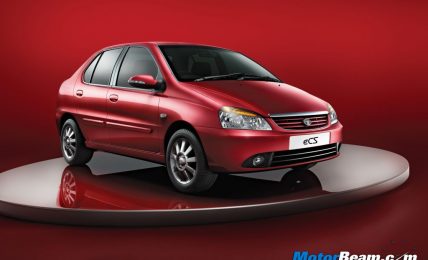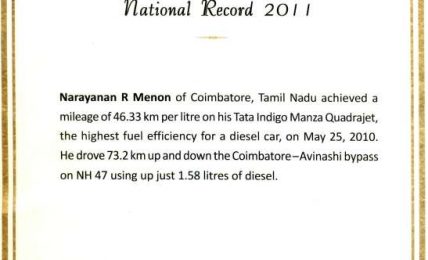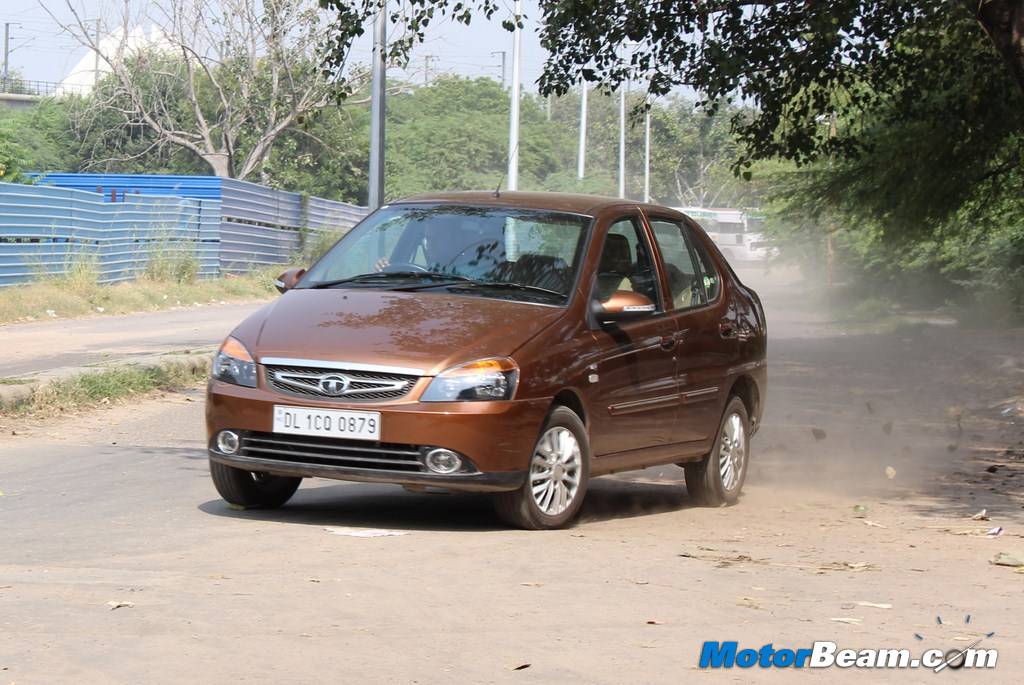[singlepic id=12315 w=540 h=375 float=center]
Car tested: Tata Indigo Manza 1.3L Quadrajet Diesel
Price OTR Mumbai: Rs. 7,72,556/-
Tata Motors, over the years have grown significantly from being a relatively small player in the Indian market to becoming a major international automobile manufacturer, they own Jaguar and Land Rover, two brands that are among the most prestigious in the world, their cumulative annual sales amount to USD 16 billion but however, the root of all their success, is firmly planted here at their home turf, India. Vehicles like the Indica and Indigo are simply among the biggest reasons for Tata’s huge success. We take a look at the latest version of their most successful sedan yet, the Indigo Manza.
[singlepic id=12327 w=540 h=375 float=center]
First Impressions – As you may know, the Indigo has always been a stretched out version of its younger brother, Indica. Though they may share the same platform, it’s quite a different story on the inside. Both cars, in the past have been heavily criticized for their shoddy build quality and unreliable mechanicals, but one thing about the car which garnered a lot of praises was the mileage which it delivered; at the time of launch, it set benchmarks for a small car’s fuel efficiency, with its aerodynamic design and relatively efficient engines. Hence there were seemingly a whole lot of people who were willing to trade quality for quantity.
[singlepic id=12330 w=540 h=375 float=center]
A closer look at the older cars shows that Tata was keen to beat the competition simply by the numbers, headroom, legroom, boot space, mileage and price. Of course, designing a car with this sort of mindset made it seem disproportionate and even odd, this was evident in the design of the previous generation Indigo which had a boot that was fatter than the car itself and driving dynamics best described as ridiculous. The fact that they had to make a car better than all others in its class at a much cheaper price meant that they simply had to cut corners for the plan to succeed. With the new Tata Indigo Manza though, it is apparent that the folks at Tata Motors have learned their lessons and a new direction has been taken; to produce quality cars without compromises.
[singlepic id=12340 w=540 h=375 float=center]
One glance at the car and you notice how much better it has been built that its predecessor, tight shut lines and a clean design overall make a great first impression, as you get in, the well designed seats and the all new dashboard with a welcome message makes you forget that this is basically a made-in-India vehicle. Though the quality has improved by leaps and bounds, there are still a few tiny glitches here and there, but they are something that most people can live with considering the overall package. Knock on the door panels and the dash and you are reassured that this is not a sheep in wolfs clothing, it really is genuinely better than ever before.
[singlepic id=12321 w=540 h=375 float=center]
Interior and Features – The new ads for the Manza seemingly tries to show the car as having all the luxuries one could want; In our opinion, for a car that is among the basic sedans on Indian roads, it is quite well equipped. The version we tested, the Aura had central locking, Bluetooth phone sync, USB and Aux input, remote control for Audio system, an information screen that shows fuel consumption, distance to empty, time and temperature, Aux power in the rear and a bunch of other features. It even had a cool rev meter which lights up red when the redline is reached, this was one truly original feature.
[singlepic id=12331 w=540 h=375 float=center]
The rear legroom is indeed in a class of its own. This car was designed for the chauffer driven with fantastic rear seat incline angle. If you want a car for rear legroom, this it it.
[singlepic id=12344 w=540 h=375 float=center]
The music system displays a welcome message along with the TATA logo every time the ignition is turned on. The controls are easy to use and the built in sound system packed a decent punch with a total of 6 speakers. Another cool feature is the 12V power supply for the rear passenger. Its location is also well thought of, since it is on the rear parcel tray, anyone could plug in their phone with an adapter and leave it there without worrying about it falling down. It also makes life easier for anyone who travels with large 12V accessories like cooler boxes or even air pumps since the wire can be easily be routed to the trunk.
[singlepic id=12325 w=540 h=375 float=center]
Interior quality has improved by miles compared to the older car but still there are a few tiny problems around that remind you of the old Indica like the ill fitting horn panel on the steering, the out of place ignition keyhole, uneven gaps around the glove compartment and a rear seat that refuses to lock back into place after you have folded it down. The speedo unlike the close up shots is also really small.
[singlepic id=12322 w=540 h=375 float=center]
Overall the interior has been revamped really well apart from the minor niggles mentioned above and the new design can help attract a lot of customers for Tata. The color tone, feel and quality is surely in a much better league.
[singlepic id=12328 w=540 h=375 float=center]
Performance – With the doors closed, you can barely hear the starter cranking the engine, the diesel power plant quickly settles to a quite whirr that one can mistake for being petrol. Nothing much needs to be said about engine refinement as this features the highly advanced and capable 1.3 Multijet diesel sourced from Fiat. As you may know it’s the same engine that’s featured on the Swift, Swift Dzire, Palio, Linea, the Indica Vista and even the Ritz. Manufacturers have tuned this engine for their specific performance requirements, while Maruti calls it the DDiS, Tata calls it the Quadrajet. It’s a pure gem of an engine. The sheer number of cars that are on the road today, with this power plant, in India and all over the world stand testimony to its refinement. In the old days and even today, people generally have the assumption that a petrol is always more powerful and refined than a diesel but guess what, they may be wrong. The petrol Manza sports a 1370cc engine that produces 90PS @ 6000 RPM and 116Nm of torque at 4700 RPM, the diesel version we are talking about here is a smaller 1248cc and produces the same 90 PS @ a much lower 4000 RPM along with a torque of 200 NM @ 1750 – 3000 RPM. This is what it’s like on paper.
[singlepic id=12332 w=540 h=375 float=center]
On the road, the slight turbo lag comes into effect, anywhere below 1800 Rpm. At such RPM’s you would find it sluggish, with a little patience let the needle go north and you could feel what it’s like to poke needle into a sleeping lion. With the accelerator floored and the needle at 2000RPM, a sudden jolt of thrust pushes you into the seats and quite soon, you hit the rev limiter, shift to second and the needle drops to 3000 with a massive jerk reminding you of the power it beholds, driving a Tata vehicle was never so exciting. As long as the needle hovers around the 2000 Rpm mark, it’s simply a treat to drive; overtaking maneuvers can be done in the blink of an eye. We several times felt that it made more power than claimed because the acceleration in the 1800 – 4000 Rpm range was simply great and even addictive, the engine note as you can hear from the video is really sporty for a diesel car. It’s not too hard to get used to the power curve and a few minutes of driving can make you one with the machine. The best part of all this awesomeness is the fuel efficiency, drive carefully and you can expect well around 20 kmpl and even more. The package is simply brilliant, all the power you would want with the benefit of frugality.
[singlepic id=12342 w=540 h=375 float=center]
Also, if you may know older Tata cars had a problem where the car would start to show serious lag once the A/C is switched on, if you had a few other passengers on board, then you would find 100cc’s overtaking you, not with this car, three people onboard, A/C and sound system turned on, there is hardly any difference with the Manza, fuel efficiency may be affected but the power remained untapped into. The gearbox used worked really well with the engine, its short throws and low positioning made it sporty and at the same time easy to use. Every shift at the redline puts the needle back to 3000 Rpm and makes the power seem endless. For people who love driving, this is one car they should try out.
[singlepic id=12343 w=540 h=375 float=center]
Handling & Driveability – After driving around the twisties for a while we stopped for a photo shoot and it was then that we realised how huge the car really was. Behind the wheel, we could barely feel the bulk of the car and the responsive steering just got me involved in driving. We would have liked a little bit more feel but it was sharp, weighted and accurate nonetheless. Around the bends, it felt as good as a front wheel drive diesel car can be, if it wasn’t for the body roll, the car could have been much more agile.
The suspension is a bit on the firm side, but this helps you have a spot of confidence behind the wheel, something that was never there with its predecessor, Tata Motors have definitely put in the hours in designing this bit of the car since it shows considerable improvement. At high speeds, the height adjustable seats, the adjustable steering wheel all work together to provide confidence, enough to help you reach triple digit speeds without leaving you disconnected from the road like the old car. The turbo lag can be a problem during stop and go traffic but as soon as you get through, it’s all good. Ride quality has always been the Indigo’s forte and the Manza is no different. It has a fantastic ride which soaks up all the potholes with aplomb. Brakes have seen a drastic improvement and the car stops without stepping out of line much. Brake feel is much better and inspires confidence at triple digit speeds.
Also the clutch was light with relatively less travel so it never became painful getting stuck in traffic. The audio and phone controls on the steering wheel were well placed with grooves on them so you really wouldn’t have to take your eyes of the road anymore for changing the music station or for phone calls. Overall, to say the least, the car is reassuring to drive.
[singlepic id=12339 w=540 h=375 float=center]
Conclusion – The main reasons why people used to reject the previous Indigos were that it handled like a boat, sounded like a tractor, had utterly poor ride quality and were built like Chinese cars. The new car, however, has plenty of reasons why you should consider it. The build quality, features, efficiency and the great new 1.3 Quadrajet engine are among its strongest points. If you are looking for an alternative to the Swift Dzire, seriously, look no further.
Whats Cool
- Engine
- Fuel Efficiency
- Interior Design
- Rear legroom
- Braking
Whats UnKool
- Minor quality issues
- Weird looks
- After sales service
- Puny tyres
[singlepic id=12334 w=540 h=375 float=center]
Tata Indigo Manza Specifications –
- Engine: 1248cc, 16V, Quadrajet, DOHC
- Power: 90 PS @ 4000 RPM
- Torque: 200 Nm @ 1750 – 3000 RPM
- Transmission: 5-speed manual
- Top Speed: 160 km/hr
- 0-100 km/hr: 16.50 seconds
- Fuel Consumption: 13-14 km/l (City), 17-18 km/l (highway)
- Fuel Type: Diesel
- Suspension: Independent lower wishbone, McPherson strut with coil springs (Front), Semi-independant twist beam with coil springs and hydraulic shock absorbers (Rear)
- Tires: 185/60/15 Tubeless Radials
- Brakes: Vacuum Assisted Independent Dual Circuit Diagonal Split Hydraulic Brakes through Tandem Master Cylinder, 257 mm Ventilated Disc (Front), 203 mm Drums ( Rear), ABS, EBD
- Safety: ABS, Dual SRS Front Airbags, Immobilizer, Collapsible Steering
Tata Indigo Manza Dimensions –




